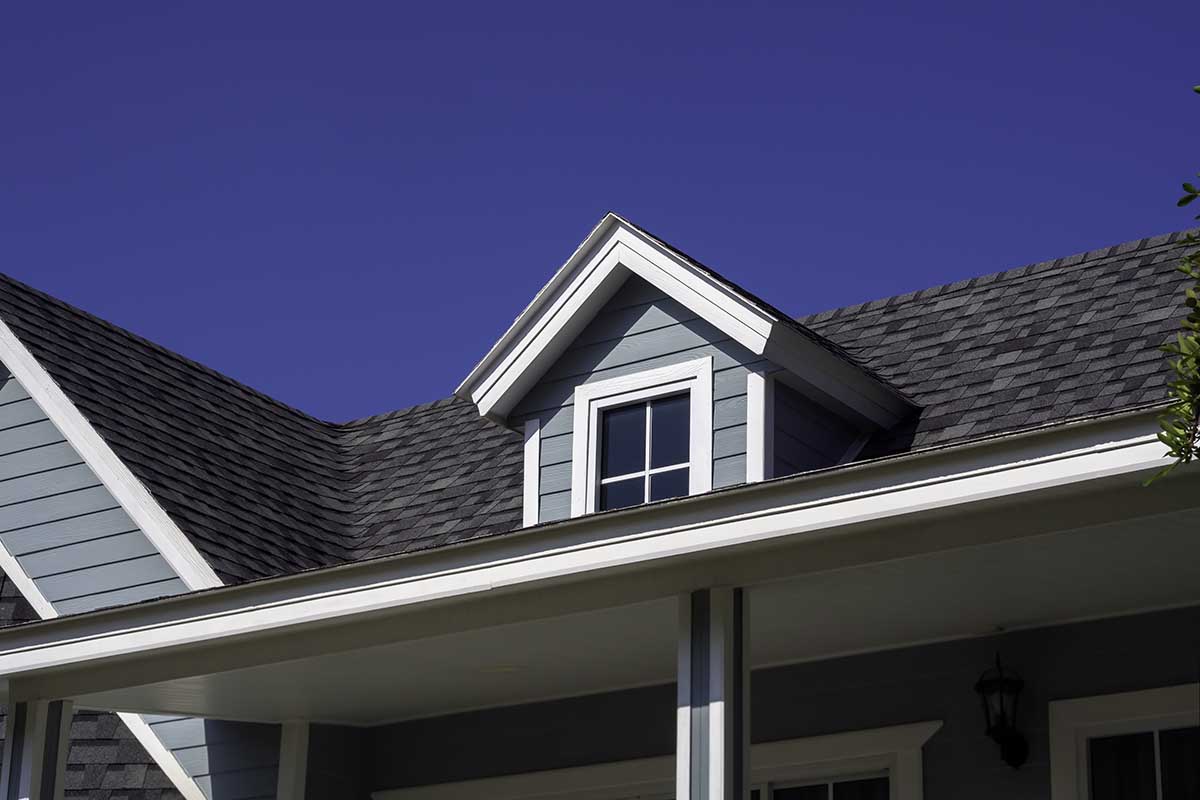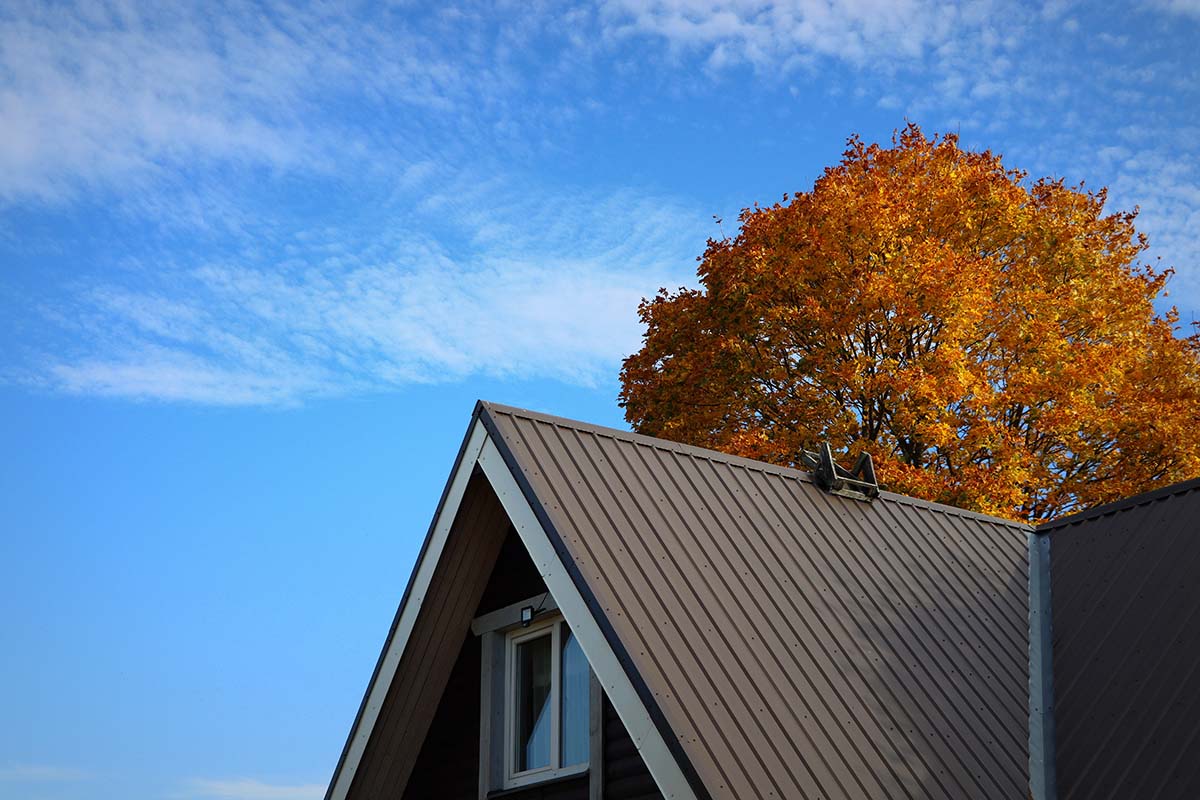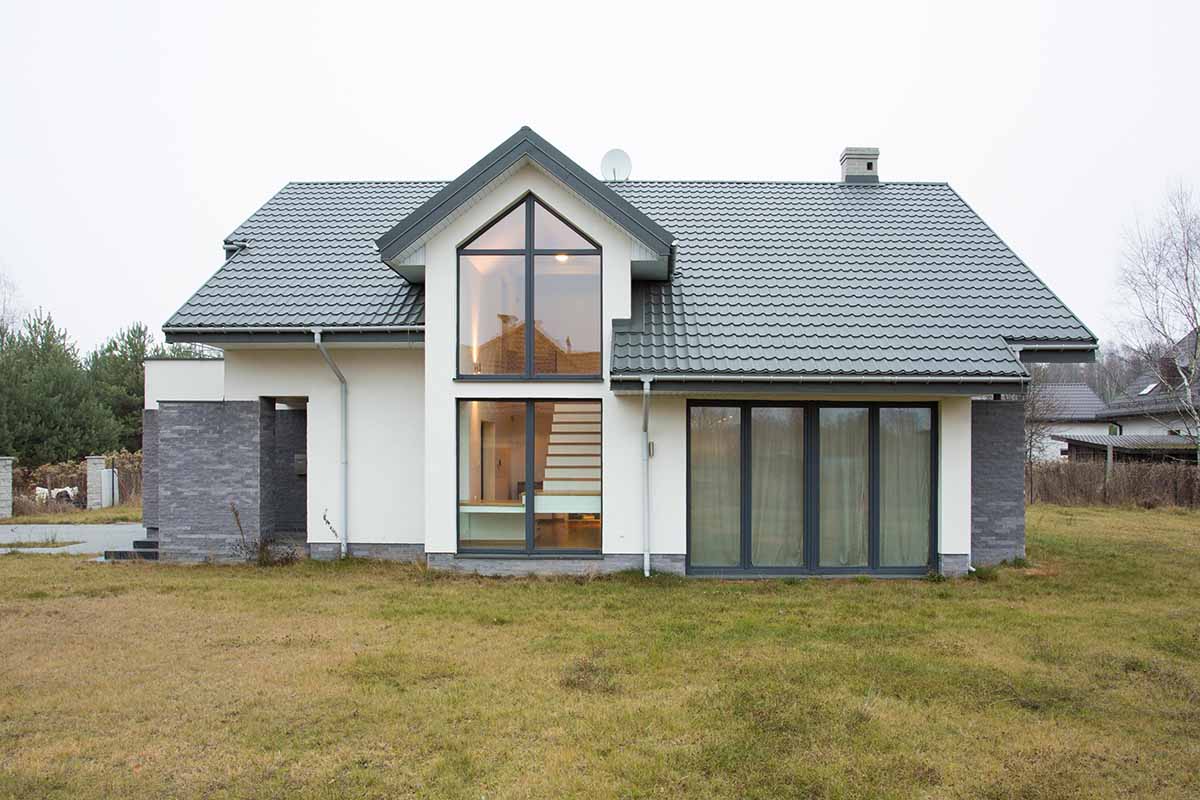Choosing the Perfect Roof for Your Home
Key Points
- Roofing Material Options Matter: Many roofing materials exist, such as PVC, asphalt, slate, and clay. Each has its pros and cons in durability and cost.
- Function Beyond Protection: Roofs not only shield from the weather but also regulate temperature and add to a home’s value and aesthetics.
- Key Factors in Choosing a Roof: Budget, durability, eco-friendliness, and local building codes should be considered before selecting roofing materials.
Most people’s first priority with their money is keeping a roof over their head, but what that roof looks like and what it’s made from are often pretty low down on the list of things we consider when we are finding a place to stay, if we even consider them at all.
This is not such a problem if you are renting, but once you have your own place you will find that part of being a responsible homeowner will be taking care of your roof, making sure it meets your needs, and changing it if it doesn’t.
If you have not yet had to choose a new roof, you might wonder how difficult it can really be.
✅Aren’t all roofs basically the same?
The answer to that is not any more. In our modern world there is a wide range of options for roofing materials.
So many, in fact, that many people spend hours researching them only to end up paralyzed by indecision.
This guide will help equip you with the knowledge you need to pick the right roof for your property.
It will discuss why roofs probably matter more than you think, the different materials available to choose from, and the pros and cons of each.
The functions of a roof
At a glance, a roof’s function seems singular and straightforward: it keeps us and our belongings dry.
This is certainly true, but a roof has several more functions, all of which are essential to our safety and comfort. These include:
- Protection from all the elements: Yes, keeping us dry is a big part of what a roof does. It also keeps the sun’s harmful rays from shining down on us all day and keeps us safe from strong winds.
- Regulates temperature: Beyond keeping the elements out, another way a roof acts as our first line of defence against nature is by keeping warmth in when it is cold outside. How well it does this contributes massively to your home’s overall energy efficiency. A properly insulated roof made of a suitable material and kept in good condition will mean that you do not need to use as much energy heating or cooling your home.
- Looking good: Residential buildings rarely have flat roofs, which means that they can be easily seen and contribute to the overall aesthetic of your home. How well a roof is maintained, and how well it matches the rest of a home’s exterior, can contribute greatly to a home’s value and charm.
Things to look for in a roof
When it comes to selecting a new roof, there are a number of factors for you to consider.
Aesthetics and weather resistance, as mentioned above, are two of them. The rest are outlined below. You may assign them different levels of importance.
- Budget: Roofing can get expensive depending on the material and the size of the roof. Make sure it fits your budget.
- Durability: Some roofing materials can last a lifetime, others need to be replaced much sooner.
- Warranty: Like durability, you generally want this to be as long as possible.
- Eco-friendliness: Recycled materials can be used to make new roofing, and some types of roofing can themselves be recycled when the time comes to replace them.
- Steepness: The slope of your house’s roof structure has an effect on which materials can be used.
- Building codes: Some areas prohibit certain materials. Make sure the roof you choose meets any local criteria.
Roofing materials
These are some of the common roofing materials and their pros and cons:
- PVC: A vinyl roof, also known as a PVC roof, is a durable option that is very resistant to wear and tear, to the weather, to water, and to chemicals. It also looks great and comes either as large sheets for flat roofs or shingles for sloped ones.
PVC is one of the most expensive options, but it requires less in terms of roof maintenance and can last for decades.
- Asphalt: Asphalt shingles are an affordable option and are widely used in homes all around the world. They are easily installed and come in many colours.
However, asphalt lasts only 15-30 years, and is not the most weather-resistant choice.
- Slate: These are extremely durable and can last a lifetime, but you need to pay up for this. Many people also consider them the most aesthetic option.
Slate requires specialised installation, and is also very heavy. You may need to check if your home is structurally strong enough to support it.
- Plastic polymer: This looks like slate while being lighter, more eco-friendly and more affordable. It has good durability.
The main downside of plastic polymer is that the style options are often limited.
- Clay: Like slate, clay tiles are beautiful and highly durable even without much maintenance. However, they are heavier and costlier than some other options.
- Concrete: These look like clay tiles but are generally cheaper. They can be heavier, though. This is another material where it is wise to check how sturdy your house’s structure is first.
With knowledge of the different materials and hopefully a good understanding of what your local housing authority allows or recommends, you are now prepared to make the best roofing choice for your home.
Most people’s first priority with their money is keeping a roof over their head, but what that roof looks like and what it’s made from are often pretty low down on the list of things we consider when we are finding a place to stay, if we even consider them at all.
This is not such a problem if you are renting, but once you have your own place you will find that part of being a responsible homeowner will be taking care of your roof, making sure it meets your needs, and changing it if it doesn’t.
If choosing a new roof is not something you have yet had to do, you might wonder how hard it can really be.
Aren’t all roofs basically the same?
The answer to that is not any more. In our modern world there is a wide range of options for roofing materials.
So many, in fact, that many people spend hours researching them only to end up paralyzed by indecision.
This guide will help equip you with the knowledge you need to pick the right roof for your property.
It will discuss why roofs probably matter more than you think, the different materials available to choose from, and the pros and cons of each.
The functions of a roof
At a glance, the function of a roof seems singular and straightforward: it keeps us and our belongings dry.
This is certainly true, but a roof has several more functions, all of which are essential to our safety and comfort. These include:
- Protection from all the elements: Yes, keeping us dry is a big part of what a roof does. It also keeps the sun’s harmful rays from shining down on us all day and keeps us safe from strong winds.
- Regulates temperature: Beyond keeping the elements out, another way a roof acts as our first line of defence against nature is by keeping warmth in when it is cold outside. How well it does this contributes massively to your home’s overall energy efficiency. A properly insulated roof made of a suitable material and kept in good condition will mean that you do not need to use as much energy heating or cooling your home.
- Looking good: Residential buildings rarely have flat roofs, which means that they can be easily seen and contribute to the overall aesthetic of your home. How well a roof is maintained, and how well it matches the rest of a home’s exterior, can contribute greatly to a home’s value and charm.
Things to look for in a roof
When selecting a new roof, you must consider several factors.
Aesthetics and weather resistance, mentioned above, are two of them.
The rest are outlined below. You may assign them different levels of importance.
- Budget: Roofing can get expensive depending on the material and the size of the roof. Make sure it fits your budget.
- Durability: Some roofing materials can last a lifetime, others need to be replaced much sooner.
- Warranty: Like durability, you generally want this to be as long as possible.
- Eco-friendliness: Recycled materials can be used to make new roofing, and some types of roofing can themselves be recycled when the time comes to replace them.
- Steepness: The slope of your house’s roof structure has an effect on which materials can be used.
- Building codes: Some areas prohibit certain materials. Make sure the roof you choose meets any local criteria.
Roofing materials
These are some of the common roofing materials and their pros and cons:
- PVC: A vinyl roof, also known as a PVC roof, is a durable option that is very resistant to wear and tear, to the weather, to water, and to chemicals. It also looks great and comes either as large sheets for flat roofs or shingles for sloped ones.
PVC is one of the most expensive options, but it requires less in terms of roof maintenance and can last for decades.
- Asphalt: Asphalt shingles are an affordable option and are widely used in homes all around the world. They are easily installed and come in many colours.
However, asphalt lasts only 15-30 years, and is not the most weather-resistant choice.
- Slate: These are extremely durable and can last a lifetime, but you need to pay up for this. Many people also consider them the most aesthetic option.
Slate requires specialised installation, and is also very heavy. You may need to check if your home is structurally strong enough to support it.
- Plastic polymer: This looks like slate while being lighter, more eco-friendly and more affordable. It has good durability.
The main downside of plastic polymer is that the style options are often limited.
- Clay: Like slate, clay tiles are beautiful and highly durable even without much maintenance. However, they are heavier and costlier than some other options.
- Concrete: These look like clay tiles but are generally cheaper. They can be heavier, though. This is another material where it is wise to check how sturdy your house’s structure is first.
With knowledge of the different materials and hopefully a good understanding of what your local housing authority allows or recommends, you are now prepared to make the best roofing choice for your home.






















